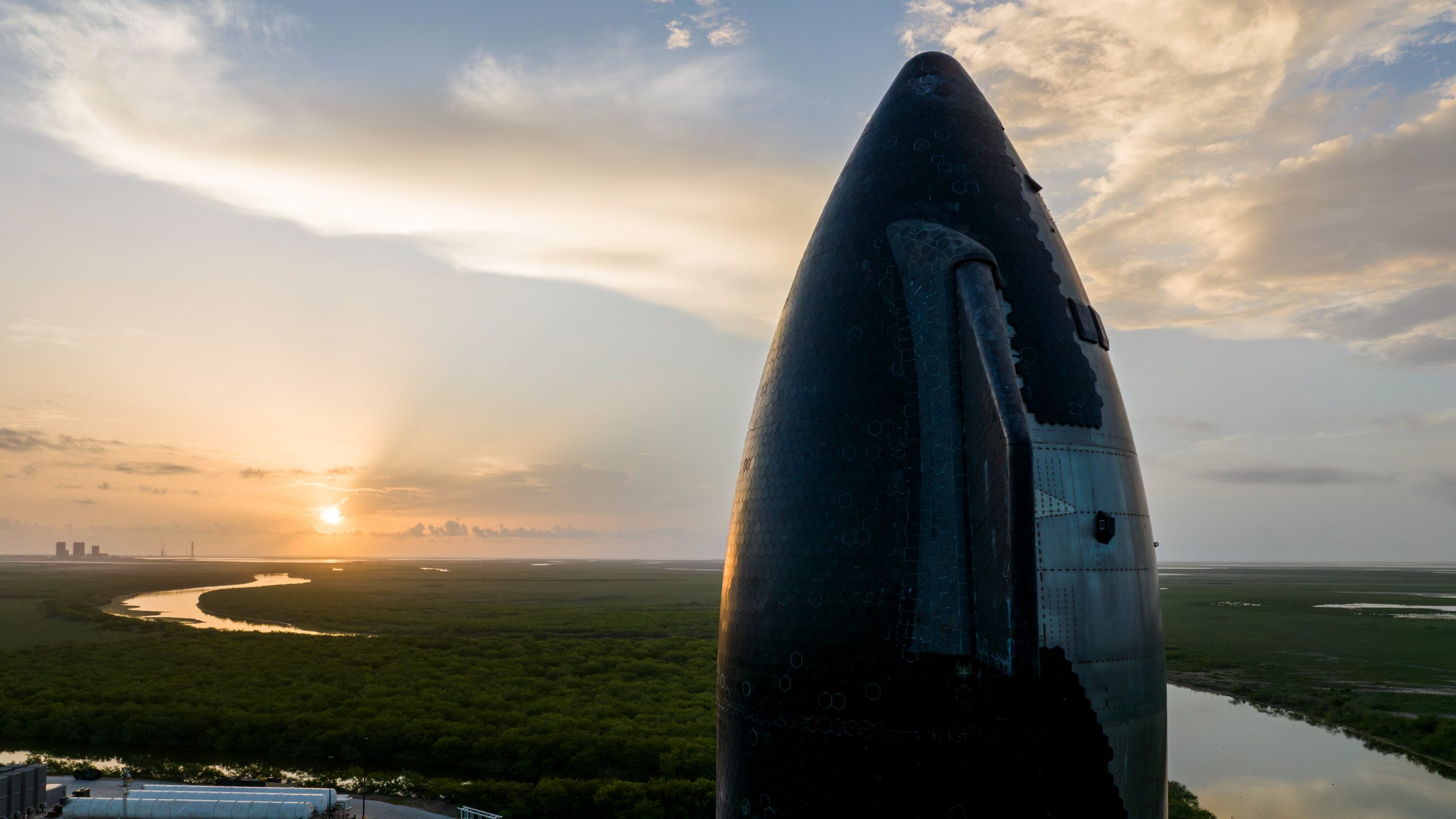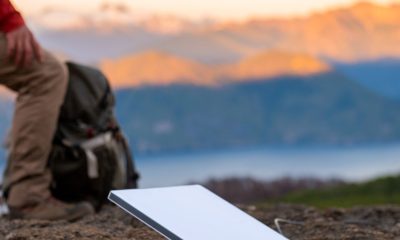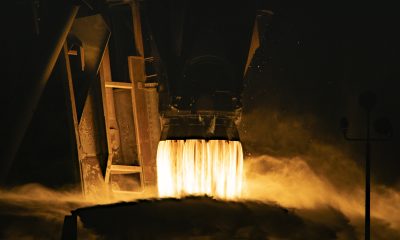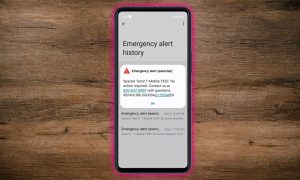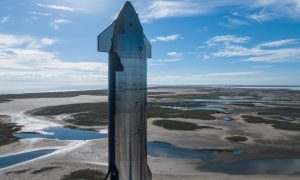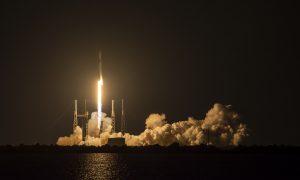U.S. Representative Kevin Kiley (R-CA) has sent a letter to FAA Administrator Michael Whitaker over his recent claims about SpaceX. During Tuesday’s Transportation Committee hearing, Whitaker advanced several alleged safety concerns about SpaceX’s operations, all of which were strongly denied by the private space company.
During his testimony, the FAA Administrator alleged that SpaceX must operate at the highest level of safety, which includes having a safety management system program and a whistleblower program. He also alleged that SpaceX had launched without a permit last year in Cape Canaveral, FL and that the delay in Starship’s Flight 5 launch was due to SpaceX failing to provide an updated sonic boom analysis, among other safety concerns.
FAA Administrator Whitaker made several incorrect statements today regarding SpaceX. In fact, every statement he made was incorrect.
It is deeply concerning that the Administrator does not appear to have accurate information immediately available to him with respect to SpaceX… pic.twitter.com/OrtMUvnCNI— SpaceX (@SpaceX) September 24, 2024
SpaceX strongly denied each of Whitaker’s claims. In a letter, Mat Dunn, senior director of global government affairs at SpaceX, stated that “every statement (the FAA Administrator) made was incorrect.” Dunn also argued that SpaceX is currently the “safest, most reliable launch provider in the world, and is absolutely committed to safety in all operations.”
Kiley’s recent letter to Whitaker carried some of the points from SpaceX’s rebuttal of the FAA Administrator’s claims. As per the Representative, Whitaker must provide answers to a number of questions surrounding his claims during the Transportation Committee hearing.
FAA Administrator Whitaker made a number of false statements in his testimony about @SpaceX. Either he doesn’t know what’s going on at his agency or he deliberately deceived Congress.
I’ve asked him which it is. Either possibility calls into doubt his fitness to lead the FAA. pic.twitter.com/lW2KcOnItT— Rep. Kevin Kiley (@RepKiley) September 25, 2024
Following is U.S. Representative Kevin Kiley’s letter to FAA Administrator Michael Whitaker.
September 25, 2024
Michael Whitaker
800 Independence Avenue, SW
Administrator
Federal Aviation Administration
Washington, DC 20591
Dear Administrator Whitaker,
On September 24, 2024, you testified at a hearing of the Aviation Subcommittee of the House Transportation and Infrastructure Committee. I asked you several questions during that hearing regarding the FAA’s decisions with respect to SpaceX launches. Your answers appear to be filled with inaccurate statements. Such falsehoods raise serious concerns about your fitness to lead the FAA. Please provide my office with responses in writing to the following questions –
- You claimed that SpaceX launched recent Falcon missions without a permit. SpaceX has said these claims are completely false, and that the FAA has not alleged previously that the company was not permitted or licensed to launch these missions. Can you share the evidence for your claim that SpaceX launched these missions without a permit?
- You claimed that SpaceX moved a fuel farm closer to the population without completing a risk analysis statement. SpaceX says that the new location was twice the distance from the nearest publicly accessible area, that the company provided the FAA with all the required analysis, and that the FAA ultimately approved the revised location. Please supply all correspondence between the FAA and SpaceX relative to the fuel farm.
- You claimed that SpaceX failed to provide an updated sonic boom analysis. SpaceX refutes this and says that the Fish and Wildlife Service had already reviewed Starship’s sonic booms and determined they had no environmental impact. While SpaceX has acknowledged it recently provided the FAA data showing a slightly larger sonic boom area than originally anticipated, the company maintains this results in no new environmental impact.
- What evidence does the FAA have of a new environmental impact?
- How long will it take the FAA to make this minor paperwork update?
- What evidence does the FAA have for your assertion that this is a safety related incident”?
- You claimed that SpaceX was in violation of Texas state law. What Texas laws did SpaceX violate?
- Does the FAA need to be reformed to keep up with innovation in the commercial space industry?
From the dawn of the space age, America has set the standard in exploration. Our nation’s spirit of innovation has propelled us to the moon and pushed the boundaries of what’s possible. If we want to keep that legacy alive, we must work with innovators, rather than slow them down. We cannot hinder private industry that is pushing the limits, with regulatory red tape and constant delays. The longer we stall, the more ground we lose. We must continue to empower our private space companies to innovate, build, and lead. This is the only way that we can ensure our national security, while also guaranteeing that America defines the next generation of space exploration. I look forward to your response.
Sincerely,
Kevin Kiley
Member of Congress
Don’t hesitate to contact us with news tips. Just send a message to simon@teslarati.com to give us a heads up.
News
Stellantis unveils solid-state battery for EVs
Stellantis validated solid state battery cells for EVs: ultra-dense, fast-charging, and AI-optimized. Launching demo fleet by 2026.

Stellantis N.V. and Factorial Energy have validated Factorial’s automotive-sized FEST® solid-state battery cells, a major milestone for next-generation electric vehicle (EV) batteries. The breakthrough positions Stellantis and Factorial to advance EV performance with lighter, more efficient batteries.
“Reaching this level of performance reflects the strengths of our collaboration with Factorial.
“This breakthrough puts us at the forefront of the solid-state revolution, but we are not stopping there. We continue working together to push the boundaries and deliver even more advanced solutions, bringing us closer to lighter, more efficient batteries that reduce costs for our customers,” said Ned Curic, Stellanti’s Chief Engineering and Technology Officer.
The 77Ah FEST® cells achieved an energy density of 375Wh/kg, supporting over 600 cycles toward automotive qualification. Unlike lithium-ion batteries, these solid-state cells charge from 15% to over 90% in 18 minutes at room temperature and deliver high power with discharge rates up to 4C. Factorial’s AI-driven electrolyte formulation enables performance in temperatures from -30°C to 45°C (-22°F to 113°F), overcoming previous solid-state limitations.
“Battery development is about compromise. While optimizing one feature is simple, balancing high energy density, cycle life, fast charging, and safety in an automotive-sized battery with OEM validation is a breakthrough,” said Siyu Huang, CEO of Factorial Energy. “This achievement with Stellantis is bringing next-generation battery technology from research to reality.”
The collaboration optimizes battery pack design for reduced weight and improved efficiency, enhancing vehicle range and affordability. Stellantis invested $75 million in Factorial in 2021 and plans to integrate these batteries into a demonstration fleet by 2026. This fleet will validate the technology’s real-world performance, a critical step toward commercialization.
The milestone aligns with Stellantis’ push for sustainable EV solutions, leveraging Factorial’s disruptive technology to meet the rising demand for high-performance batteries. As the companies refine pack architecture, the validated cells promise faster charging and greater efficiency, potentially reshaping the EV market. With the demonstration fleet on the horizon, Stellantis and Factorial are poised to lead the solid-state battery push, delivering cost-effective, high-range EVs to consumers.
News
Tesla China vehicle registrations rise 51% in April’s fourth week
In the week ending April 27, Tesla China saw 10,300 new vehicle registrations.

Tesla China’s new vehicle registrations saw a notable rise in the week of April 21-27, 2025. Over the week, the electric vehicle maker’s registrations saw an impressive 51% week-over-week rise, suggesting that domestic vehicle deliveries are on the rise once more.
Tesla China Results
In the week ending April 27, Tesla China saw 10,300 new vehicle registrations. This represents a notable rise from the company’s registration numbers in the past weeks of April. For context, Tesla China saw 3,600 registrations in the week ending April 6, 5,400 registrations in the week ending April 13, and 6,780 registrations in the week ending April 20, 2025.
Considering that April is the first month of the second quarter, expectations were high that Tesla China was allocating Giga Shanghai’s output for vehicle exports. With 10,300 registrations in the week ending April 27, however, it would appear that the company’s domestic deliveries are picking up once more.
Tesla China does not report its weekly sales figures, though a general idea of the company’s overall perforce in the domestic auto sector can be inferred through new vehicle registrations. Fortunately, these registrations are closely tracked by industry watchers, as well as some local automakers like Li Auto.
Tesla Model 3 and Model Y in Focus
Tesla China produces the Model Y and Model 3 in Giga Shanghai. Both vehicles are also exported from China to foreign territories. As per industry watchers, it would appear that both the Model 3 and Model Y saw an increase in registrations in the week ending April 27.
The Model 3, for one, appears to have seen 3,200 registrations in the week ending April 27, a 14% increase from the 2,800 that were registered in the week ending April 20. For context, Tesla China saw just 1,500 new Model 3 registrations in the week ending April 13 and 1,040 registrations in the week ending April 6.
The Model Y, on the other hand, saw 7,100 registrations in the week ending April 27. That’s a 77.5% increase from the 4,000 that were registered in the week ending April 20. Tesla also saw 3,900 registrations in the week ending April 13, and 2,540 registrations in the week ending April 6, 2025.
News
Volkswagen teams with Uber for robotaxi service with the ID. Buzz
Volkswagen and Uber team up to launch a driverless ID. Buzz robotaxi fleet in U.S. cities. Testing starts in LA this year.

Volkswagen of America and Uber unveiled a plan to launch a commercial robotaxi service using autonomous electric ID. Buzz vehicles across U.S. cities over the next decade. The partnership marks a significant step for Volkswagen’s autonomous vehicle ambitions, leveraging Uber’s ride-hailing expertise.
The service will debut in Los Angeles by late 2026, with human safety operators initially overseeing the fleet before transitioning to fully driverless operations in 2027. Volkswagen ADMT, the German automaker’s autonomous subsidiary, will begin testing in Los Angeles later this year upon securing a testing permit from the California Department of Motor Vehicles. The California Public Utilities Commission will oversee permits for the commercial ride-hailing phase.
“Volkswagen is not just a car manufacturer — we are shaping the future of mobility, and our collaboration with Uber accelerates that vision,” said Christian Senger, CEO of Volkswagen Autonomous Mobility. “What really sets us apart is our ability to combine the best of both worlds–high-volume manufacturing expertise with cutting-edge technology and a deep understanding of urban mobility needs.”
The Trump administration’s recent policy shift, announced last Thursday by Transportation Secretary Sean Duffy, supports initiatives like VW and Uber’s partnerships by easing federal safety rules and crash reporting requirements on autonomous vehicle development. According to Duffy, the United States government wants to outpace Chinese competitors in autonomous vehicle development.
Volkswagen ADMT, which launched publicly in July 2023, has been testing 10 ID. Buzz vehicles equipped with Mobileye’s autonomous technology in Austin, reported TechCrunch. Two years ago, Volkswagen focused on selling self-driving vans and fleet management software rather than building its own ride-hailing service. VW’s strategy toward autonomous vehicles appears to have shifted, as reflected in its Uber partnership.
Uber will strengthen its autonomous vehicle portfolio through its partnership with Volkswagen. The ride-hailing service company has secured deals with over 14 firms, including Waymo in Austin and a forthcoming launch in Atlanta.
The Volkswagen-Uber collaboration positions both companies to capitalize on the growing robotaxi market. With testing imminent and regulatory support increasing, the ID. Buzz fleet could redefine urban mobility, blending Volkswagen’s manufacturing prowess with Uber’s ride-hailing network to compete in the evolving autonomous vehicle landscape.
-

 News1 week ago
News1 week agoTesla’s Hollywood Diner is finally getting close to opening
-

 Elon Musk2 weeks ago
Elon Musk2 weeks agoTesla doubles down on Robotaxi launch date, putting a big bet on its timeline
-

 News4 days ago
News4 days agoTesla is trying to make a statement with its Q2 delivery numbers
-

 News2 weeks ago
News2 weeks agoTesla’s top investor questions ahead of the Q1 2025 earnings call
-

 News2 weeks ago
News2 weeks agoUnderrated Tesla safety feature recognized by China Automotive Research Institute
-

 News2 weeks ago
News2 weeks agoTesla reveals its Q1 Supercharger voting winners, opens next round
-

 News2 weeks ago
News2 weeks agoTesla police fleet saves nearly half a million in upkeep and repair costs
-

 Investor's Corner7 days ago
Investor's Corner7 days agoLIVE BLOG: Tesla (TSLA) Q1 2025 Company Update and earnings call

